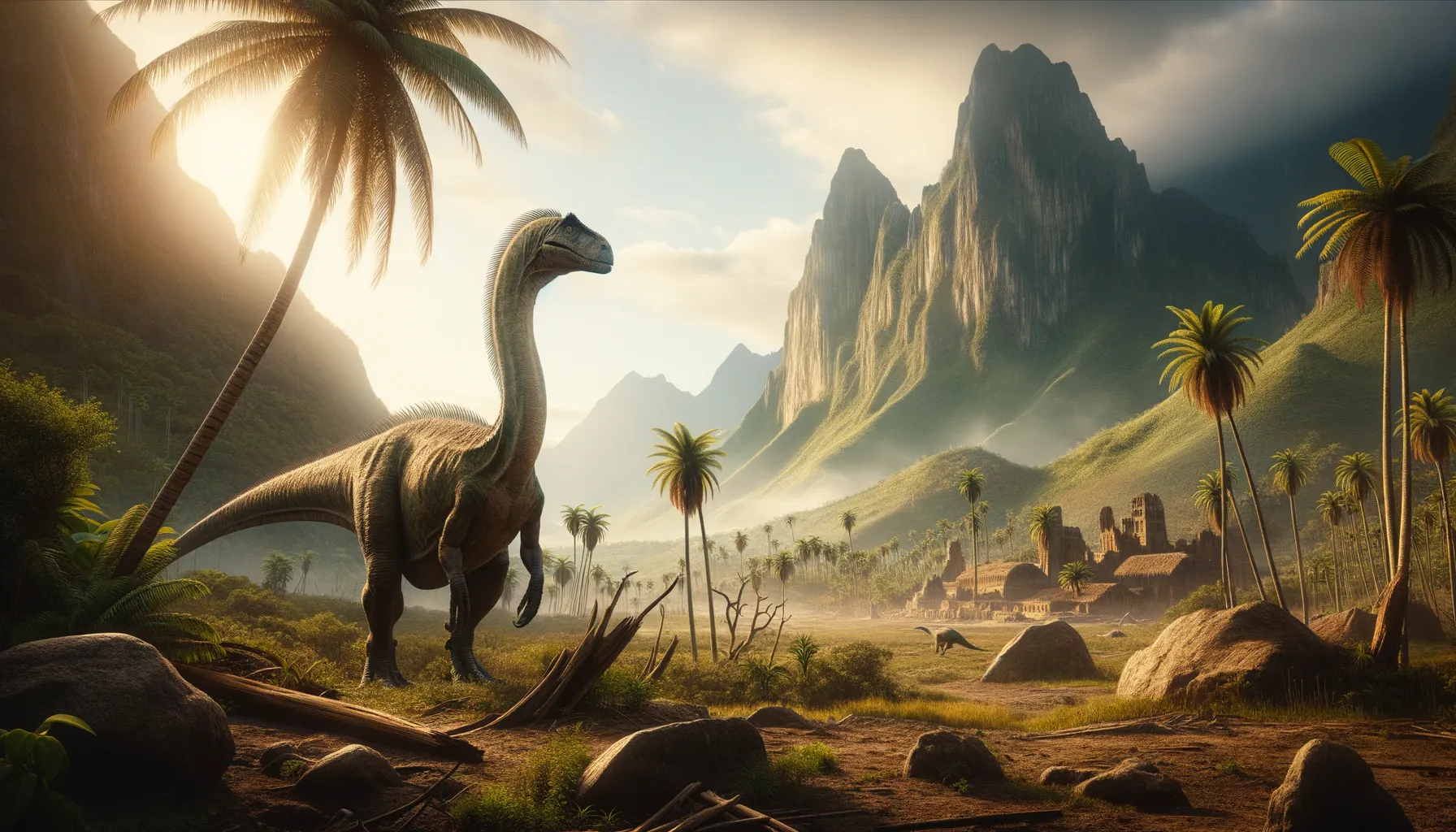
Nopcsaspondylus
Towering herbivore of the Cretaceous.
Period
Cretaceous
Length
Measured approximately 30 feet long.
Height
Reached heights of around 10 feet.
Weight
Weighed up to 1.5 tons.
Nopcsaspondylus was a mid-sized dinosaur from the Cretaceous period, known for its long neck and herbivorous diet. It roamed the ancient landscapes of what is now South America, using its height to reach vegetation that was out of reach for other species. Its fossils give us a glimpse into ancient ecosystems, helping us understand the diversity of life that thrived millions of years ago.
Diet
Nopcsaspondylus was a herbivore, feeding primarily on the tall vegetation available in its habitat. It likely utilized its long neck to browse for leaves and branches that other dinosaurs could not reach.
Hunting
As a herbivore, it did not engage in hunting. Instead, it foraged for plant materials and likely moved in herds to graze on vegetation.
Environmental challenges
Nopcsaspondylus faced challenges such as fluctuating climate conditions in the Cretaceous period. Periods of drought would have made food and water scarce, compelling them to move across their territory in search of sustenance. Defense against predators was likely managed through size and group behavior.
Speed
Moderate walker with no significant speed.
Lifespan
Lived for several decades, approximately 50-70 years.
First discovery
Fossils unearthed in South America in the early 20th century.
Fun Facts
- Nopcsaspondylus was a genus of titanosaurs, a group of long-necked dinosaurs known for their large size.
- It lived during the Late Cretaceous period, approximately 66 to 100 million years ago.
- Nopcsaspondylus was named after the Hungarian paleontologist Baron Franz Nopcsa, who made significant contributions to the study of prehistoric reptiles.
- This dinosaur's remains were first discovered in Argentina, a region famous for its rich fossil beds.
- Nopcsaspondylus, like other titanosaurs, likely roamed in herds and grazed on plants to sustain its massive body.
- Despite its size, Nopcsaspondylus was a herbivore, feeding mainly on the abundant vegetation of its time.
- The discovery of Nopcsaspondylus fossils helps scientists understand the diversity of dinosaur species in South America during the Cretaceous period.
Growth and Development
Young Nopcsaspondylus would have been vulnerable to predators, leading to a rapid growth phase in their early years. As they matured, their substantial size became a deterrent against most threats. Growth would have been supported by an abundant supply of vegetation.
Habitat
Inhabited lush, forested environments with diverse plant life. Thrived in regions with plenty of water sources, which sustained the plant life they depended on. These environments also attracted a wide range of other herbivores and predators.
Interaction with other species
Shared its habitat with various other herbivores, which could result in competition for food. Predators of the era saw Nopcsaspondylus as potential prey, especially when they were younger. Their large size as adults afforded some protection from most threats.
Natural lifespan
Its natural lifespan was several decades, similar to large animals today.
Reproduction
Likely used traditional dinosaurian reproductive strategies, laying eggs in a nest. Parental care might have been limited to guarding the nest and ensuring suitable conditions for incubation.
Social behaviour
Possibly moved in herds to provide safety in numbers against predators. There may have been social hierarchies within groups, influencing feeding and movements. Social interactions would play a role in mating and caring for young.
Fossil locations
Fossils discovered primarily in Argentina, providing insight into Cretaceous South American ecosystems. These finds have been crucial in piecing together its lifestyle and interactions within its environment. The fossils include well-preserved bones giving clues about its size and physical structure.
